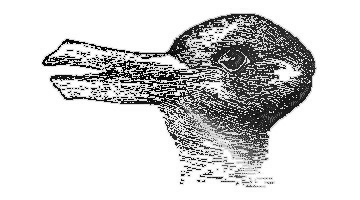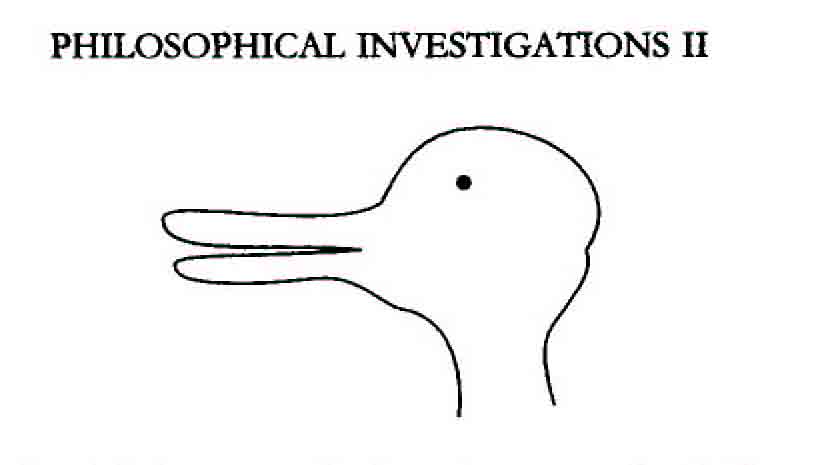
“I contemplate a face, and then suddenly notice its likeness to another. I see that it has not changed; and yet I see it differently. I call this experience “noticing an aspect…” And I must distinguish between the ‘continuous seeing’ of an aspect and the ‘dawning’ of an aspect… I see two pictures, with the duck-rabbit surrounded by rabbits in one, by ducks in the other. I do not notice that they are the same. Does it follow from this that I see something different in the two cases? It gives us a reason for using this expression here. “ I saw it quite differently, I should never have recognized it!” Now, that is an exclamation. And there is also a justification for it. I should never have thought of superimposing the heads like that, of making this comparison between them…. I describe the alteration (change of aspect) like a perception; quite as if the object had altered before my eyes…. The expression of a change of aspect is the expression of a new perception and at the same time of the perception’s being unchanged. I suddenly see the solution of a puzzle-picture.”
Ludwig Wittgenstein, Philosophical Investigations.
The picture Wittgenstein alludes to is not the one above but this one:

The philosopher redrew the image, eliminating the textures and shades. The illusion had to be “calligraphic”, reduced to the minimal expression of a contour. To move from an organic morphing animal to a crystalline puzzle-picture, the philosopher does not use only words, he also engages with hand and ink.